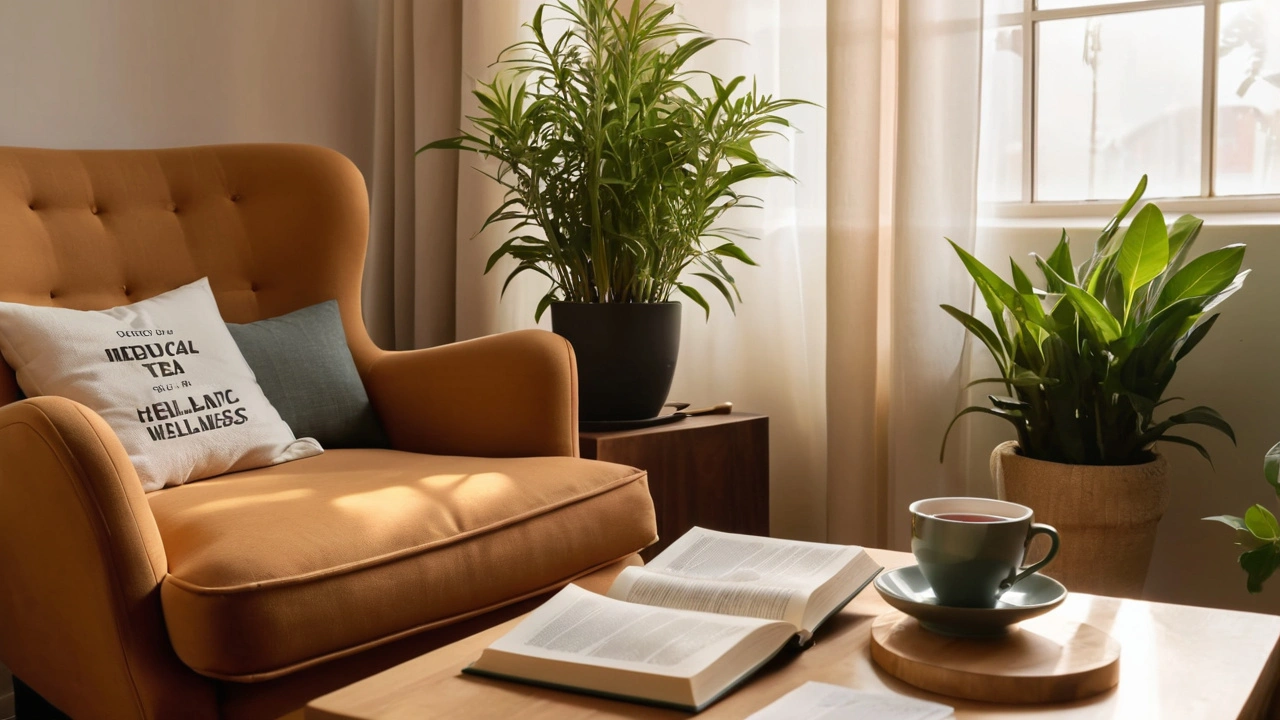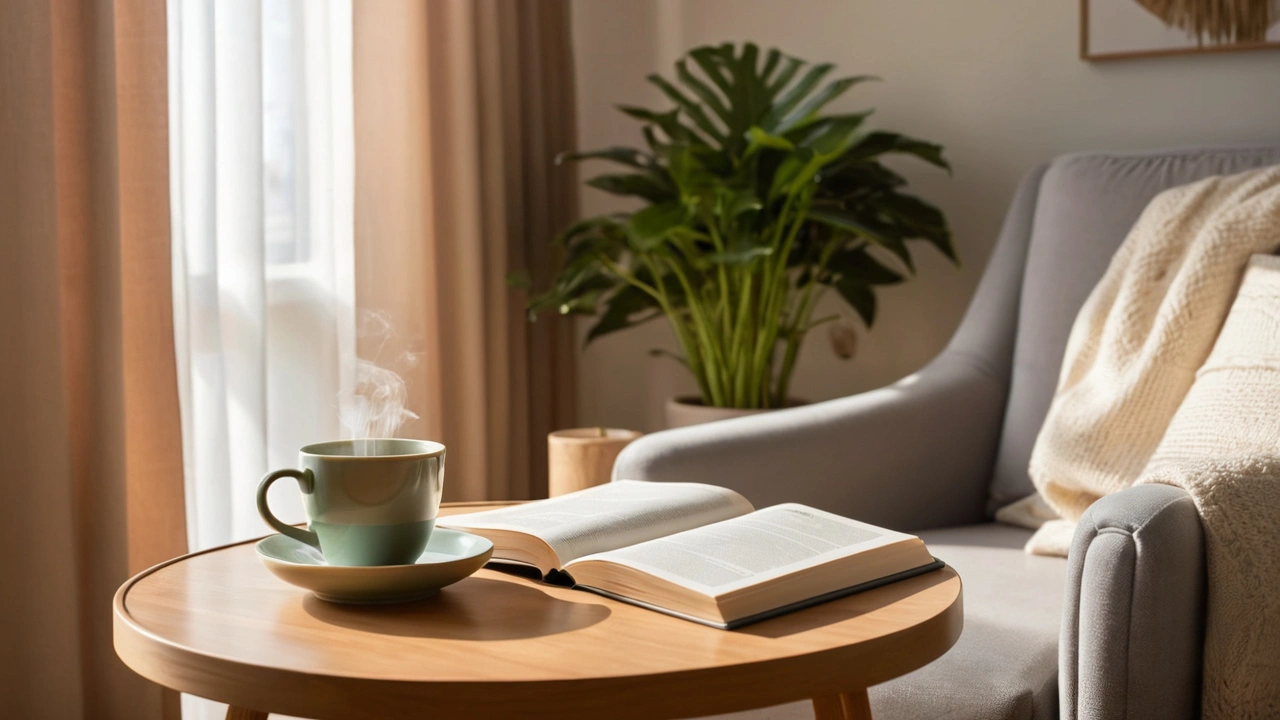When it comes to discussing health issues, hemorrhoids might not be the most glamorous topic, but it's a common one many deal with. This guide aims to clear up any questions you might have about these often uncomfortable occurrences.
From understanding what hemorrhoids are to learning about symptoms, causes, and various treatment options, we cover it all. You'll also find some practical tips on prevention to help you avoid hemorrhoids in the future.
What Are Hemorrhoids?
Hemorrhoids are swollen veins found in the lower part of the anus and rectum. When the walls of these blood vessels stretch, they become irritated and can cause discomfort, itching, and sometimes bleeding. Hemorrhoids are a common condition, and by the time individuals reach the age of 50, about half have experienced one or more of the classic symptoms, including pain, itching, and bleeding.
There are two main types of hemorrhoids: internal and external. Internal hemorrhoids develop inside the rectum. They are usually painless, although straining during bowel movements can irritate them, causing bleeding. External hemorrhoids form under the skin around the anus and can be very uncomfortable. If an external hemorrhoid prolapses outside the anus, it can both be seen and felt.
Several factors contribute to the development of hemorrhoids. Some of the most common include straining during bowel movements, prolonged sitting (especially on the toilet), chronic constipation or diarrhea, and a low-fiber diet. Additionally, obesity, pregnancy, and genetics can increase one's risk. Hemorrhoids may develop when there is increased pressure in the lower rectum, causing the veins to bulge or swell.
Interesting Facts About Hemorrhoids
One interesting fact about hemorrhoids is that they are a part of our natural anatomy. They help control bowel movements by acting as cushions composed of blood vessels, connective tissue, and muscle. It is only when they become enlarged and cause symptoms that they become a concern. Chronic hemorrhoids can occasionally lead to anemia due to significant blood loss over time.
Historical references to hemorrhoids date back to ancient times. The Greek physician Hippocrates, known as the 'Father of Medicine,' wrote about techniques for treating hemorrhoids, including cautery.
"Hemorrhoids are very frequent and are often accompanied by symptoms of itching, sometimes pain, and they can cause social discomfort." - Hippocrates
It's fascinating that despite advances in medical science, many treatments from centuries ago bear resemblance to those used today, emphasizing the enduring nature of this condition. The word 'hemorrhoids' itself comes from Greek origins: 'haima' meaning blood and 'rhoos' meaning flowing.

Symptoms and Causes
Anyone who has experienced hemorrhoids knows they can be more than just an annoyance – they can significantly impact daily life. Recognizing the symptoms early can help in managing them effectively. Common symptoms include itching, discomfort, swelling around the anus, and bleeding during bowel movements. You might also feel a lump near your anus, which can be painful. Often, these lumps are nothing more than swollen blood vessels, but they can cause significant discomfort.
Internal hemorrhoids usually present with painless bleeding after a bowel movement. You might notice small amounts of bright red blood on the toilet paper or in the toilet bowl. External hemorrhoids, on the other hand, can be incredibly painful and might form a hard lump around the anus. This lump is caused by a blood clot in the external hemorrhoid, a condition known as thrombosis. Thrombosed hemorrhoids can cause severe pain and inflammation.
Several factors can cause hemorrhoids. Straining during bowel movements is one of the most common causes. This straining puts extra pressure on the veins in the rectal area, causing them to swell and form hemorrhoids. Other causes include prolonged sitting, chronic constipation or diarrhea, being overweight, and even heavy lifting. Pregnancy is another significant factor due to the pressure exerted on the abdominal veins by the growing uterus.
Age also plays a role. As we get older, the tissues supporting the veins in the rectum and anus can weaken and lose their elasticity, making hemorrhoids more likely. Dietary habits significantly impact the likelihood of developing hemorrhoids too. Diets low in fiber can lead to harder stools, increasing the risk of straining during bowel movements. Hydration is equally important as dehydration can lead to constipation, another contributing factor to hemorrhoids.
"One study found that people who consumed a high-fiber diet had fewer hemorrhoid symptoms than those who did not," according to the American Gastroenterological Association.
Understanding the causes and symptoms is the first step in managing hemorrhoids effectively. With awareness and prompt action, many people find relief from the discomfort and pain associated with this condition.

Treatment Options
Finding relief from hemorrhoids can be a bit of a journey since various factors influence the best methods of treatment. Thankfully, several approaches can help manage and reduce the uncomfortable symptoms of hemorrhoids.
One of the first lines of defense involves over-the-counter treatments. Creams and ointments like hydrocortisone can help alleviate inflammation and itching. Witch hazel wipes are another remedy that may soothe irritation. These treatments are convenient and easily accessible, making them a popular option for instant relief.
For those looking for more natural alternatives, soaking in a warm bath, also known as a sitz bath, for about 15 minutes several times a day can be very beneficial. This method helps to reduce swelling and discomfort. Adding Epsom salts to the water might enhance its soothing effects. Increasing your fiber intake and staying well-hydrated are also key elements in preventing constipation, which can exacerbate hemorrhoids.
While home remedies work for many, sometimes professional medical treatments become necessary. In such cases, procedures like rubber band ligation may be considered. This procedure involves placing a rubber band around the base of the hemorrhoid to cut off its blood supply, causing it to wither away. It's a minimally invasive option with a good success rate.
If rubber band ligation isn't suitable, other procedures like sclerotherapy or infrared coagulation may be recommended. Sclerotherapy involves injecting a solution into the hemorrhoid to shrink it, while infrared coagulation uses heat to cause the hemorrhoid to solidify and shrink. These options are less invasive and can often be done in a doctor's office with minimal downtime.
For severe or persistent cases, surgery might be the best course of action. Hemorrhoidectomy is a surgical procedure to remove large external hemorrhoids or prolapsed internal ones. Though it may sound daunting, many patients find significant and lasting relief. Another surgical option is hemorrhoidopexy, also known as stapling, which is less painful and involves less recovery time compared to traditional hemorrhoidectomy.
Interestingly, according to a study published in the Journal of Gastroenterology, about 50% of individuals over the age of 50 experience hemorrhoids. This speaks to the importance of understanding and discussing effective treatment options openly.
In the end, the choice of treatment depends on the severity of hemorrhoids and individual preferences. It is always a good idea to consult with a healthcare provider to determine the most suitable approach. Remember, relief is not far away, and with the right treatment, you can manage symptoms and discomfort effectively.

Prevention Tips
Preventing hemorrhoids starts with making simple lifestyle changes. Your diet plays a significant role in this. A diet rich in fiber can help soften your stool and make it easier to pass, reducing the strain during bowel movements. Fruits, vegetables, whole grains, and legumes are excellent sources of fiber. Including such foods in your daily meals can significantly lower your chances of developing hemorrhoids.
Adequate hydration is another key factor. Drinking plenty of water throughout the day keeps your digestive system functioning smoothly. Aim for at least eight glasses of water a day. This helps keep your stool soft and reduces the need to strain during bowel movements. It’s a small step, but it can make a huge difference in maintaining your gut health.
Regular exercise is another crucial element in preventing hemorrhoids. Physical activity helps stimulate bowel function, reducing the likelihood of constipation. Try incorporating at least 30 minutes of moderate exercise, like walking or jogging, into your routine. Even simple activities like stretching can promote healthy blood circulation and reduce the pressure on veins in the rectal area.
Pay attention to your bathroom habits as well. Avoid sitting for long periods on the toilet, as this can increase the pressure on the veins in your rectum. If you feel the urge to go, don’t delay. Holding it in can lead to constipation and worsen hemorrhoid symptoms. Also, it’s essential to avoid straining and to take your time during bowel movements, as rushing can put unnecessary stress on the affected area.
The importance of good hygiene cannot be overstated. Always keep the anal area clean and dry. After using the toilet, gentle cleaning with moist towelettes or wet toilet paper is better than dry toilet paper, which can be abrasive. Wearing loose, breathable underwear made of cotton can help prevent irritation and contribute to overall comfort.
"Proper hydration coupled with a high-fiber diet significantly reduces the risk of hemorrhoids and promotes better digestive health." — Dr. James Anderson, Gastroenterologist
Lastly, avoid heavy lifting whenever possible, as it can contribute to increased pressure in the abdominal region and exacerbate hemorrhoid symptoms. If you must lift heavy objects, make sure to use proper techniques like bending your knees and keeping your back straight to reduce strain on your lower body.

Jolanda Julyan
July 24, 2024 AT 21:22First, thank you for putting together such a thorough guide on a subject that many shy away from discussing.
I think it is important to acknowledge that hemorrhoids are a common problem that affect a wide range of people regardless of age or gender.
The article does a solid job explaining the difference between internal and external hemorrhoids in plain language that anyone can follow.
It also rightly points out that straining on the toilet and a low‑fiber diet are major culprits, which is something that many of us have seen in our own lives.
I appreciate the inclusion of historical notes about Hippocrates because it adds an interesting perspective without getting too academic.
The treatment section covers both over‑the‑counter ointments and more serious medical procedures, giving readers a clear roadmap of options.
I especially like the recommendation to use sitz baths with Epsom salts, as that is a cheap and effective home remedy that I have used myself.
The guide also stresses the importance of staying hydrated and eating plenty of fruits, vegetables, and whole grains, which cannot be overstated.
For those who are prone to constipation, the tip about avoiding prolonged sitting on the toilet is both practical and easy to implement.
The prevention tips are laid out in a step‑by‑step manner, making it simple to turn the advice into daily habits.
It is also useful that the article warns against heavy lifting and suggests proper lifting techniques, a point that many other sources overlook.
The inclusion of a quote from a gastroenterologist adds authority and helps reassure readers that the information is medically sound.
Overall, the guide is comprehensive, well‑structured, and written in a tone that is both supportive and direct.
It manages to keep the language simple while still covering all the essential details that someone dealing with hemorrhoids needs to know.
I would recommend this post to anyone looking for a balanced mix of medical facts, practical advice, and a dash of historical trivia.
Keep up the good work and continue to share clear, helpful health information with the community.
Kevin Huston
July 24, 2024 AT 22:55Your guide is a bland, half‑hearted attempt that ignores the real American way of slashing hemorrhoids with common sense.
Amanda Hamlet
July 25, 2024 AT 01:02Listen, I’m gonna jump in here because most folks don’t realize that using scented wipes can actually irritate the area more than it helps, especially if you have a sensitive skin. That’s why I always say stick to plain water or unscented baby wipes – it’s not rocket science. Also, many people forget that your diet should include not just fiber but also a good amount of magnesium, which helps keep stools soft; you can find it in nuts and leafy greens. Another thing that gets missed is the role of regular physical activity, even just a short walk after meals can keep things moving and prevent the dreaded constipation that leads to straining. Lastly, don’t ignore the fact that sitting on a cold toilet seat for long periods can cause the veins to tighten, so a simple padded seat can make a world of differnce. Most forums will tell you the same, but it's still worth repeating.
Nolan Jones
July 25, 2024 AT 02:52Hey Amanda, you’re right on the wipe thing – I’ve seen too many people get rash from those perfumed ones. A quick sitz bath with a bit of tea tree oil can calm the skin without any weird smells. Also, I always tell folks to aim for at least 25 grams of fiber a day; if that sounds high, just add a scoop of psyllium husk to your morning smoothie. Stay hydrated, keep moving, and you’ll notice a big drop in flare‑ups. Hope that helps!
Jada Singleton
July 25, 2024 AT 04:42While the guide covers the basics, it glosses over the psychological impact that chronic hemorrhoids can have on self‑esteem, which is a serious oversight. Future updates should address coping strategies and the emotional burden alongside the physical remedies.